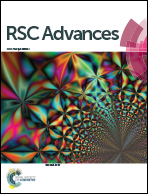A study on the effect of four thermoplastic elastomers on the properties of double-base propellants
Abstract
To improve the low-temperature mechanical properties of double-base propellants, glycidyl azide polymer-energetic thermoplastic elastomer (GAP-ETPE), polyether block copolyimide-thermoplastic elastomer (PEBA-TPE), 1,2-polybutadiene thermoplastic elastomer (PB-TPE), and ethylene oxide-tetrahydrofuran copolyester-thermoplastic elastomer (PET-TPE) were used to modify them. The effects of these four thermoplastic elastomers (TPEs) on the energy properties of double-base propellants were studied via theoretical calculations. The mechanical properties of double-base propellants at high, low, and room temperature were compared, and their thermal properties were analyzed. It was found that GAP-ETPE had a significant effect on improving the low-temperature mechanical properties of double-base propellants, with the maximum tensile strength and maximum elongation at a low temperature for the double-base propellant reaching 43.30 MPa and 6.24%, respectively.



 Please wait while we load your content...
Please wait while we load your content...